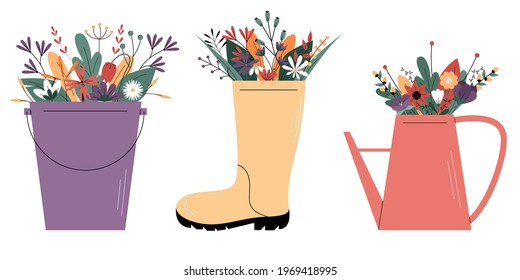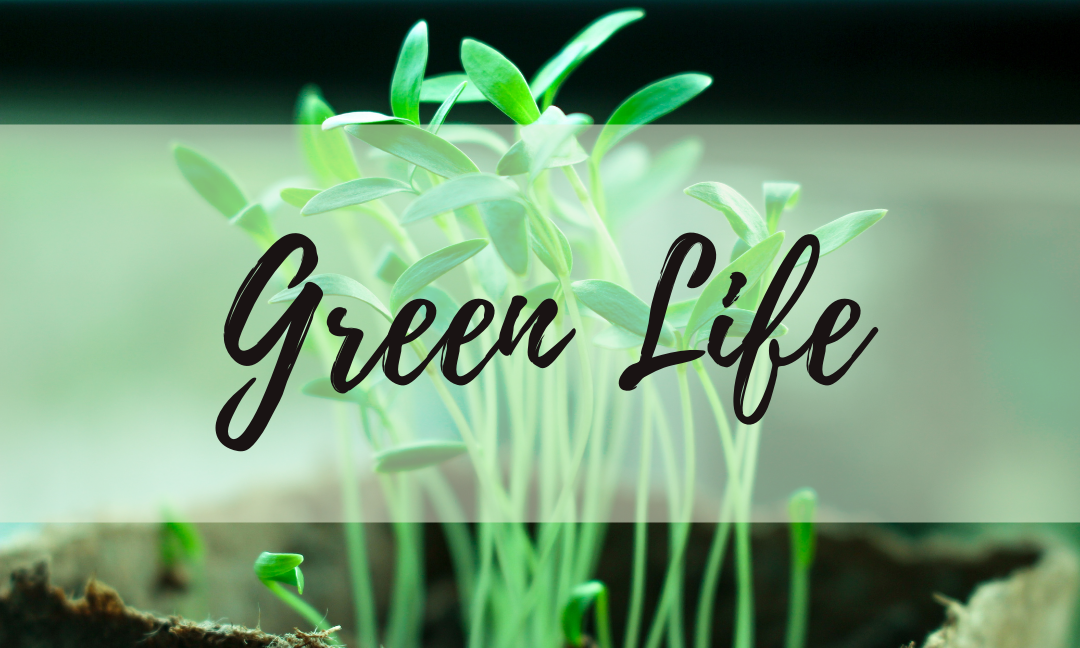Written by: Sharon Wei
Climate change. Pollution. Deforestation. Any of these terms sound familiar? Have you ever wanted to help rectify, only to defer after concluding that you can’t erase all the pollution, revert the impacts of climate change, or miraculously sprout more trees no matter your efforts? I present ‘Green Living’ – an excellent way of contributing to environmental conservation. Small alterations in your lifestyle can have a positive influence on the natural world; as the quote roughly goes, even a mere pebble will create ripples upon hitting the water.
To start, what is a green lifestyle?
In simple terms, it’s a lifestyle where one makes environmentally responsible decisions to reduce their negative impact and promote the sustainability of Earth and its resources.
Why is it important?
 “We are eroding the very foundations of our economies, livelihoods, food security, health and quality of life worldwide,” said Sir Robert Watson, the Chair of the Intergovernmental Science-Policy Platform on Biodiversity and Ecosystem Services (IPBES).
“We are eroding the very foundations of our economies, livelihoods, food security, health and quality of life worldwide,” said Sir Robert Watson, the Chair of the Intergovernmental Science-Policy Platform on Biodiversity and Ecosystem Services (IPBES).
If Earth’s resources are carelessly managed, it will be pushed to the brink of exhaustion, resulting in fewer resources essential for maintaining the quality of life for present and future generations.
Presently, up to 1 million of the 8 million total estimated plants and animals species on the planet are threatened with extinction; more than one-third of the world’s land surface and 75% of all freshwater resources are devoted to crop or livestock production; 55% of ocean area is covered by industrial fishing; 60 billion tons of renewable and nonrenewable resources are extracted annually worldwide; roughly $577 billion worth of crops are at risk from pollinator loss annually; and, finally, up to 300 million people are at increased risk of floods and hurricanes because of the loss of coastal habitats.
Let that settle for a hot minute. It is data derived from a study under the IPBES; the combined efforts of some 145 expert authors from 50 countries working alongside another 310 contributing authors over the course of three years.
What are some benefits of green living?
Green living is dedicated to being more environmentally conscious. The most relevant advantage being the reduced amount of pollution entering our planet’s air, water, and soil. By opting for more sustainable methods, you can limit further damage to plastic on the environment. Not to mention, going green decreases emissions of greenhouse gas from the burning of fossil fuels, and reduces some types of air pollution. Statistics from the World Health Organization (WHO) report that 33 percent of illnesses in children under age five and 13 million annual deaths are due to environmental causes that could be avoided or prevented.
And did you know? Prolonged exposure to air pollution can be equally as harmful to your lungs as smoking cigarettes. Tedros Adhanom Ghebreyesus, the director-general of the World Health Organization, calls air pollution the “new tobacco”. Air pollution is responsible for over two million premature deaths every year globally.
Regarding the cliché that “green living is more costly than the standard, environmentally harmful lifestyle,” it is not completely unfounded as some eco-friendly products are more expensive than regular ones initially; however, they are factually more cost-efficient and energy-saving in the long run. For the concerned parties – you can save on electricity and water bills, as well as increase the value of your house if your house is eco-friendly and more sustainable.
The downsides of green living are the initial cost of some eco-friendly products; the dedication and additional effort needed to start and remain green compared to sticking to the typical harmful lifestyle; and the limited variety, plus more expensive organic food products.
Going green does not immediately require you to invest in eco-friendly appliances if that is not an option. There are simpler ways to go green!
Home Appliances
 1. Look after your appliances to prolong their life
1. Look after your appliances to prolong their life
2. Purchase biodegradable containers and products
3. Buy and use energy star and saving appliances
4. Recycle as much as you can; especially unusable electronics and appliance
Produce

5. Buy locally grown; especially if it is packaged, look for the ecolabels
6. Eat green and organic food
7. Treat food waste as ingredients
8. Compost food waste
9. Grocery shop in small increments if you find yourself wasting too much when buying in bulk
10. Plan what you are going to buy ahead
11. Look for loose fruits and vegetables and take your own containers to shops and markets to minimize the use of plastic packaging
Clothes

12. Set a limit on the clothes you buy; consider if you will wear it more than twenty times before making your choice
13. Avoid cotton when buying clothes; it takes a staggering 10,000 litres of water to create 1 kilogram of cotton, enough for a mere pair of jeans, we make billions of jeans yearly, you do the calculations
14. Consider opting for second hand; especially jeans due to the environmental impact of their production
15. Invest in clothes made of Tencel fabric, which was designed to reduce environmental impact
16. Shop in person is greener than online
17. Reduce your use of washing and drying machines; try air-drying clothes and spot cleaning
Garden

18. Buy locally grown flowers or grown your own
19. Plant your own vegetables and herbs
20. Reduce use of the lawnmower; encourages more wildlife and reduces carbon emissions
Other
21. Reduce paper consumption
22. Choose sustainable methods of transportation like carpooling and biking
23. Invest in an aerated shower head/ water-efficient showerhead
24. Avoid travel-sized beauty products – invest in refillable travel bottles
At the end of the day, going green is a personal choice by individuals to contribute towards the betterment of the planet to ensure a bright future for next generations. By incorporating sustainability in your lifestyle, you become aware of the impact of the choices you make, the products you buy, and the energy you use. It takes one person to spark change in a community. When others see the benefits of your lifestyle, they would be encouraged to follow suit!
Focus on the small things you can do to get a step closer towards green living, you can start by calculating your environmental footprint at https://www.footprintcalculator.org/home/en.
Join the race to make the world a better place!
Sources:
https://www.un.org/sustainabledevelopment/blog/2019/05/nature-decline-unprecedented-report/
https://www.webmd.com/lung/news/20191008/air-pollution-kills-as-many-people-as-cigarettes
https://blueandgreentomorrow.com/environment/7-essential-benefits-of-living-green-lifestyle/
https://greencoast.org/advantages-of-going-green-help-the-environment/
http://www.all-recycling-facts.com/cost-of-going-green.html
https://environmental-conscience.com/going-green-pros-cons/
https://sciencing.com/positive-effects-on-the-environment-from-going-green-5117214.html
https://www.theguardian.com/environment/2020/feb/29/50-ways-to-green-up-your-life-save-the-planet
https://www.conserve-energy-future.com/21-good-reasons-to-go-green.php
Images:
https://mcfarlanrowlands.com/wp-content/uploads/2020/05/farm-png-640×425.png
https://image.shutterstock.com/image-vector/cute-vector-set-garden-design-260nw-1969418995.jpg

